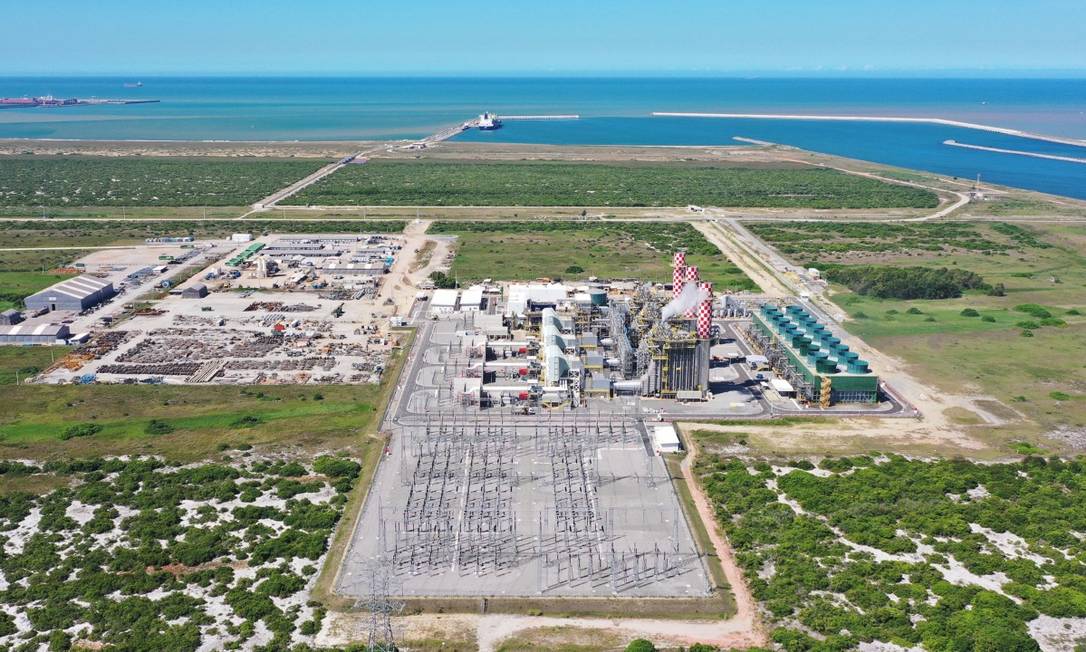RIO DE JANEIRO, BRAZIL – Brazil is witnessing the first project of the ‘new gas market’ in the port of Açu with investments in infrastructure, increased thermoelectric generation, and a restoration of the industry’s competitiveness in its various segments.
This statement comes from the Minister of Mines and Energy, Bento Albuquerque, who accompanied the President of the Republic, Jair Bolsonaro, on a visit to the facilities of the Port of Açu, in the north of Rio de Janeiro State.
On that occasion, R$6 billion (US$1.14 billion) in energy and infrastructure investments were announced, including the expansion of road access to the port, the construction of a railroad line, and the groundbreaking of the GNA II Thermoelectric Power Plant (UTE), which will be the largest gas-fired thermal power plant in the country.

The projects will contribute to Brazil’s energy security by increasing natural gas supply and enabling industries to locate there.
With investments of more than R$5 billion and the estimated creation of 10,000 jobs, UTE GNA II will be Brazil’s largest and most efficient natural gas-fired power plant. Its 1,673 MW represents 10% of the total gas-fired generation capacity available today in the interconnected national grid (SIN) and ensures the supply of 8 million households.
The GNA LNG terminal is in operation to supply the plants. It is the first terminal for private use in Brazil, where the FSRU BW Magna is anchored, a vessel with the capacity to store and regasify up to 28 million cubic meters of gas per day. This volume exceeds the gas consumption of the thermoelectric park, enabling new gas business opportunities. Expansion plans include onshore pipelines, gas flow by rail, and a natural gas processing plant (UPGN) currently in the permitting phase.
In addition to the groundbreaking for GNA II, the improvement of road access to the port was also announced. With a private investment of R$600 million and a length of 40 km, the railroad line to the port of Açu is the first authorization granted in Rio de Janeiro State under Pro Trilhos, the Ministry of Infrastructure’s railroad authorization program.
The connection of the Port of Açu to the rail network will expand the port capacity of the Central-East Corridor and create a new export corridor for Brazil, with the potential to handle 16 million tons of cargo by 2035, including grain, iron ore, fertilizer, coal, fuel coke, and steel products.
Also announced were 54 km of construction works to expand and improve road access to the Port of Açu, part of the RJ Pact, an infrastructure investment package launched by the Rio de Janeiro state government.
The three projects will create more than 70,000 direct and indirect jobs for the population in the next five years.
NEW GAS MARKET
The Novo Mercado de Gás (New Gas Market) reform program is set to enhance the physical flexibility of the gas system, enable gas to be delivered more quickly, foster competition, and facilitate the integration of a higher share of intermittent renewables into the Brazilian energy system.
In the longer term, an open, competitive gas market can more easily adapt to a multi-gas system that includes and deploys low-carbon gases. At the request of the Brazilian government, the International Energy Agency (IEA) has been providing technical advice based on international experience to inform and shape the country’s gas market reform program from day one.

